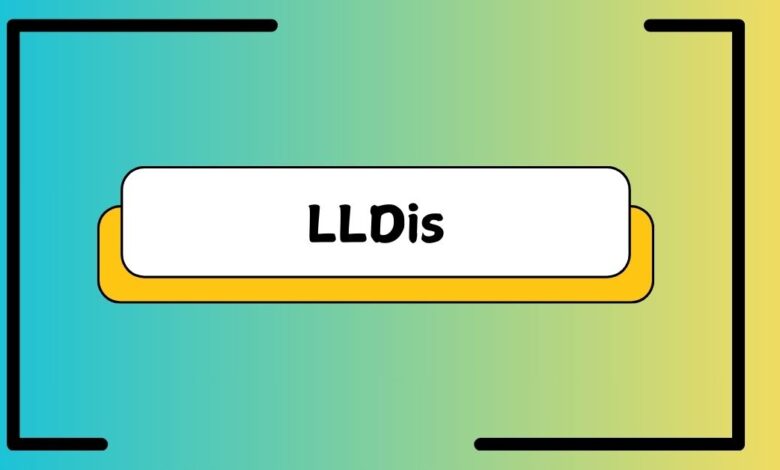Understanding LLDis: A Comprehensive Guide

In the ever-evolving landscape of technology, data management is a cornerstone of success. Whether for small businesses or multinational corporations, managing data effectively is a top priority. LLDis, short for Localized Data Distribution Information Systems, offers a new and improved way to handle vast amounts of data, enabling companies to streamline processes, ensure data security, and improve accessibility. This article explores the basics, benefits, and applications of LLDis, showing why it is gaining popularity as a revolutionary tool in data management.
What is LLDis?
LLDis, or Localized Data Distribution Information Systems, is a framework that aims to decentralize data distribution, creating a more robust and flexible data environment. Traditional data systems often rely on a central server, making them prone to delays and system failures. In contrast, It distributes data across multiple nodes, ensuring that information is accessible locally and securely. This setup is particularly useful for companies with distributed operations, as it minimizes the need for a single central point, improving both reliability and performance.
The Origin and Development of it
The concept of LLDis emerged from the need for more efficient and scalable data management solutions. As data volumes increased, traditional systems struggled to keep up with demand, creating bottlenecks and vulnerabilities. It was developed to address these issues by focusing on data localization, reducing latency, and offering faster data access. Its structure allows businesses to allocate data processing to various local servers or nodes, avoiding over-reliance on central servers.
Why LLDis is Essential in Today’s World
In today’s fast-paced digital world, data management has become a complex challenge. Businesses are not only dealing with larger datasets but also with increasingly stringent data security regulations. It provides an ideal solution for these challenges by distributing data across multiple locations, which reduces the risk of data breaches and enhances data access speed. This model allows companies to keep data close to the source, meaning that each department, branch, or division has immediate access to the data it needs without unnecessary delays.
How LLDis Systems Work
LLDis works by distributing data across various nodes or locations rather than relying on a single central server. Each node processes data locally, which allows users to access information faster and reduces the risk of network bottlenecks. This setup also improves reliability; if one node fails, others can continue to operate, maintaining data flow across the network. This decentralization is a key feature of LL Dis, making it adaptable and scalable for businesses with multiple locations or large data processing needs.
Key Components of LLDis Systems
LLDis systems have both hardware and software components. The hardware includes servers, routers, and storage devices spread across different locations, each capable of processing data independently. On the software side, LL Dis relies on databases, data management software, and secure communication protocols to ensure data flows smoothly between nodes. These components work together to maintain data integrity, security, and accessibility across the entire network.
Types of LLDis Configurations
There are various configurations within it , each suited to different business needs. The most common is a fully decentralized configuration, where each node functions independently, reducing points of failure. Some companies may opt for a semi-centralized configuration where specific nodes have more control or access privileges. This flexibility makes it adaptable to various operational requirements, whether for a small local network or a large multinational organization.
Benefits of Implementing it
The benefits of LLDis extend beyond just speed and reliability. LLDis enhances data security by reducing the reliance on central servers, which are often prime targets for cyberattacks. With data spread across multiple nodes, unauthorized access to one node does not compromise the entire network. It also enables scalability, allowing companies to add new nodes or servers as their data needs grow without major infrastructure changes. Additionally, because data is processed locally, LLDis reduces latency, enabling real-time data access and analysis.
Challenges in Adopting LLDis
Despite its advantages, LLDis implementation comes with challenges. The initial setup requires significant investment in both hardware and software, which can be costly, especially for small businesses. Technical expertise is also essential to manage the decentralized network effectively, meaning that companies may need to invest in training or hire specialists. Maintenance costs can also be higher, as each node requires its security measures and data management protocols.
Applications of LLDis in Various Industries
LLDis has found applications across multiple industries due to its versatility and efficiency. In the healthcare industry, for example, LLDis allows hospitals to manage patient records across departments securely and in real-time. In finance, It supports faster transactions and improves fraud detection by allowing local branches to access real-time data. Retail companies benefit by synchronizing inventory and sales data across different locations, providing an accurate view of stock levels and improving customer satisfaction.
Trends Shaping the Future of LLDis
Emerging technologies such as artificial intelligence (AI) and blockchain are driving new developments in LLDis. AI enables predictive analytics, allowing it’s systems to anticipate data needs and optimize data flow accordingly. Blockchain, on the other hand, enhances data security within decentralized networks by adding layers of encryption and verification. These advancements are making LL Dis even more secure, scalable, and responsive, positioning it as a cornerstone technology in data management.
The Future Potential of LLDis
The future of LLDis looks promising as businesses continue to seek more effective ways to manage data. As data demands increase, so does the need for systems that can keep up without compromising security or efficiency. It is expected to evolve with new features that further enhance data processing speed, security, and reliability. Companies looking to stay competitive will likely adopt it to keep up with technological advancements and streamline their data processes.
Getting Started with LLDis
Implementing LLDis starts with a needs assessment to determine the specific requirements of your business. Once you understand your data needs, the next step involves choosing the right hardware and software components. Collaborating with experts in LL Dis technology can also be beneficial, as they provide valuable insights and support during the setup process. Starting with a smaller pilot project can help identify potential issues before scaling up the LL Dis system across the organization.
Best Practices for it’s Implementation
For companies looking to implement LLDis, certain best practices can improve efficiency and effectiveness. Prioritizing security is essential, as each node requires independent security protocols to protect data from unauthorized access. Regular updates to both hardware and software components also help maintain system integrity. Additionally, planning for scalability is important; selecting components that can be easily upgraded ensures the LL Dis system grows alongside your business needs without major disruptions.
Conclusion
LLDis is transforming the way organizations manage and distribute data. By localizing data access and processing, it offers increased security, reduced latency, and improved scalability. Companies that prioritize efficient data management can leverage it to streamline operations, enhance data accessibility, and improve overall system reliability. As technology advances, It is poised to become a fundamental part of data infrastructure, helping businesses meet the growing demands of a data-driven world.
FAQs
What makes LLDis different from traditional data systems?
It decentralizes data by distributing it across multiple nodes rather than relying on a single central server, which improves reliability and reduces latency.
Is LLDis suitable for small businesses?
Yes, though initial costs can be high, It offers scalability and flexibility that can benefit growing businesses in the long term.
How does LLDis enhance data security?
By decentralizing data, It reduces the risk of breaches; even if one node is compromised, it doesn’t affect the entire system.
What industries benefit the most from LLDis?
It is particularly useful in healthcare, finance, and retail, where secure, real-time data access is crucial for operations.
Can LLDis integrate with AI and blockchain?
Yes, integrating AI and blockchain can further enhance it , adding predictive capabilities and improving data security.



